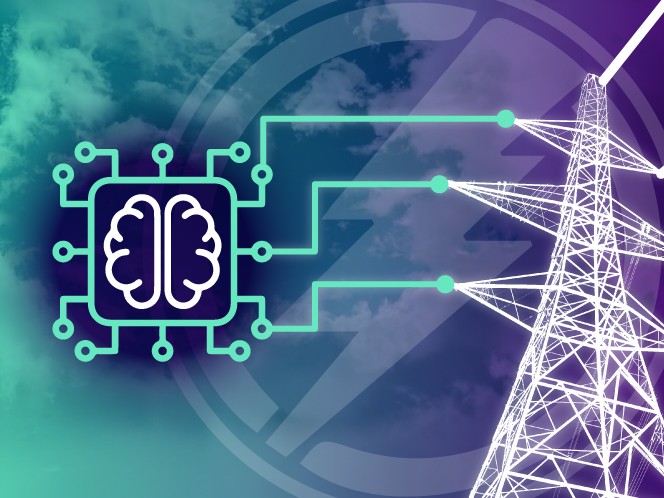AI-powered smart grids can optimize energy management in manufacturing
Posted: October 18, 2024

On August 14, 2003, 10 minutes and 39 seconds past 4 pm EDT, a 3500-megawatt power surge in Ontario coursed through the transmission grid, causing parts of the Northeastern and Midwestern United States and most parts of the Canadian province of Ontario to go dark. The blackout forced manufacturers in the area to interrupt production for hours.
Some places restored power within 2 hours; others had to wait until midnight. In New York City and part of Toronto, full power was only restored on August 16. At that time, this was one of the worst blackouts in history. According to the US Department of Energy, the outage cost about $6 billion. The Ohio Manufacturers' Association estimated the direct costs of the blackout on Ohio manufacturers alone to be over $1 billion.
This massive outage highlighted the vulnerabilities of traditional power grids and spurred interest in developing smarter, more resilient systems capable of preventing such failures. The energy sector began adopting digital technologies, and artificial intelligence (AI) began to gain traction for applications like demand forecasting and grid management.
Listen to our podcast episode about the dangers of aging grid infrastructure, part of our Future of the Power Grid series
Since then, several major economies, such as the European Union, China, Japan, India and Canada, have announced substantial new funding to modernize and digitalize their aging electricity infrastructures. In 2022, the United States announced the Grid Resilience Innovative Partnership (GRIP) Program, with USD 10.5 billion in funding to enhance the US electric grids.
These efforts have been crucial for improving energy management in manufacturing plants because a resilient grid ensures reliable power supply, reducing operational disruptions and enabling efficient energy use. The integration of AI-powered smart grids offers a transformative opportunity that helps manufacturers meet the growing demands for energy efficiency and sustainability.
Our Industrial Life
Get your bi-weekly newsletter sharing fresh perspectives on complicated issues, new technology, and open questions shaping our industrial world.
What is the role of AI in smart grids?
A smart grid is an advanced electrical grid that incorporates digital technology to facilitate a two-way flow of electricity and information between utilities and consumers. Unlike traditional grids operating on a one-way model, smart grids enable real-time communication and data exchange. This capability allows for better monitoring, control, and optimization of energy distribution and consumption.
When AI is integrated into smart grids, it has the potential to significantly improve efficiency, sustainability, and failure prediction. Using machine learning algorithms, data analytics, and predictive modeling, AI can analyze vast amounts of data generated by smart grid systems. This analysis enables utilities to:
- Monitor energy consumption patterns and grid performance in real-time, identifying inefficiencies and potential issues before they escalate;
- Forecast energy demand and supply fluctuations;
- Make automated data-driven decisions that optimize energy management and reduce waste.
A clear potential: Google DeepMind and power plants
In 2016, Google's DeepMind showed the world the practical application of AI in real-world energy management scenarios. The tech giant began collaborating with power plants to optimize cooling processes using AI.
DeepMind developed AI algorithms that analyze data from thousands of sensors in power plant cooling systems. By recognizing patterns in this data, the AI can make tweaks to save energy, such as turning off water chillers for periods of time or adjusting temperatures by a few degrees. In Google's own data centers, DeepMind's AI reduced cooling costs by 40%.
DeepMind is not alone in the quest to optimize power plants.
PXiSE, a company that develops advanced grid management and optimization software, has used AI to improve electrical grids' efficiency, reliability, and sustainability, particularly as they integrate renewable energy sources like solar and wind.
Read about how PXiSE created a customer smart microgrid solution for Santa Rosa Junior College.
Another example is Pampa Energy, Argentina's largest independent energy producer, which uses predictive maintenance algorithms to detect anomalies in gas turbine compressors before catastrophic failure.
The success of AI in optimizing power plants points to the broader potential for this technology to increase efficiency across various industrial processes. AI algorithms can be adapted to steel mills, drug production facilities, and other energy-intensive industries. For instance, Phaidra, a Seattle-based startup founded in 2019 by former Google engineers, applies AI-optimized cooling processes to pharmaceutical and district energy industries.
How can AI predict power outages?
As the frequency and severity of power outages increase over time, so does the cost to the economy. In 2018, the Department of Energy estimated that outages cost American businesses $150 billion per year. Extreme weather conditions, which are becoming more frequent and widespread, are the most common cause of power outages. Manufacturers regularly face severe storms, flooding, heat waves, and wildfires. What if they could predict upcoming weather risks and restore the power supply quickly or prevent them altogether?
In 2021, researchers at the University at Albany Atmospheric Sciences Research Center partnered with New York State Electric & Gas and Rochester Gas & Electric to work on a novel outage Their AI-powered model , including atmospheric phenomena, ground cover, soil properties, and the strength of the power lines and poles, to help manufacturers more reliably redirect crews and resources towards the areas expected to be the hardest hit.
What are the drawbacks of AI powered smart grids?
As sustainability becomes a central concern for manufacturers, AI-powered smart grids will be essential in helping companies achieve their environmental goals. AI promises to revolutionize our energy systems but comes with an energy cost and environmental footprint.
In an episode of the Our Industrial Life Podcast, Rebecca Ahrens and Elizabeth Dean try to make sense of the costs and benefits of using AI to accelerate the energy transition with Simon Bennett, Head of Research at AVEVA.